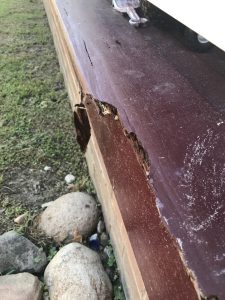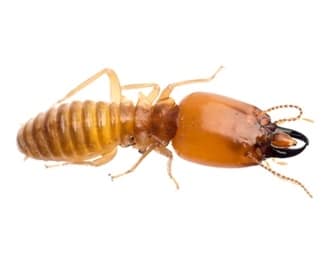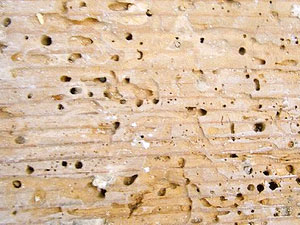Timber pest doesn’t mean just termites

East Coast Building And Pest provide building and pest inspections from Gold Coast to Coffs Harbour. A building and pest inspection before purchasing a new home is essential in identifying major structural issues, but what are The 3 Most Common Timber Pests that are identified affecting Gold Coast and Northern N.S.W Homes annually?
1) Timber Decay
Timber decay or Timber rot is caused by certain species of fungi that attack the timber fibers. This fungus can be present and lay dormant for years in timbers until certain conditions present themselves. Conducive conditions needed to activate the fungi that damage timbers in service are moisture, oxygen, and nutrients, and moisture is the critical catalyst. If moisture is not present in timber then decay-causing fungi will lay dormant within the timber, even if oxygen and the nutrients they require are abundant.
How do I stop active decay?
- Most importantly remove the source of moisture affecting the area.
- Use timber preservatives to kill existing rot or decay on an affected area.
- Dry the affected timbers and surrounding areas. Subfloor ventilation fans are effective.
What can I do to prevent Timber Decay?
- Ensure moisture is adequate around your home. This includes adequate drainage, ensuring there are no leaks and adequate ventilation.
- Use non-conducive and treated timber products in exposed areas.
- Remedial prevention products to maintain timbers and treat affected areas.
- Use a timber finish or surface coating to minimize the exposure to moisture.
- Obtain an annual timber pest inspection report to identify areas of concern.
Some timbers including structural load bearing that is damaged by timber decay must be replaced. These supporting timbers that are affected by timber decay could pose a safety hazard. If you suspect considerable decay we strongly advise inspection by one of our licensed builders.
2) Termite Attack

Schedorhinotermes – One of the top 3 most economically significant species of termite.
The current CSIRO statistic is that Termites Effect 1 in 4 Homes. Therefore, Industry reports suggest up to 80 percent of Gold Coast and Northern N.S.W homes are located within 25 meters of a termite colony. For this reason, Termites are an economic problem affecting homeowners on a regular basis. If your property has been attacked by termites, then it is important that you consult a certified, licensed pest controller. The pest controller will:
- Determine the presence of termite damage and the extent of activity.
- Correctly identify the termite species responsible for any termite damage found.
- Determine the best course of termite management for your particular property including Termite Control.
How do I identify termite attack?
Due to the fact that termites are soil-inhabiting insects when they attack timber above the soil, usually eat from the inside outwards. Therefore seldom expose themselves. The following may indicate termite presence:
- Clicking noise in areas of termite activity.
- Mud packing inside walls or around areas being attacked.
- Unusual/ Damp odor caused by some species of termites.
- Soft/ Hollowed/ damaged or dry mudding out of timbers. Placing a torch on an angle can identify uneven surfaces.
- Small holes where the winged reproductives exit to start a new colony.
- Visibility of “white ant” workers or soldiers if damaged timbers are exposed.
IMPORTANT. If you suspect any of these symptoms, DO NOT Self-treat, Prod, Damage or remove any areas of activity. Special chemicals and treatment methods provided by licensed technicians require treating as many active termites as possible. If you disturb these areas the termites will flee reducing the possibility of affecting the nest via termites passing on of chemicals via their unique feeding method. Only licensed technicians have access to these chemicals and someone who is licensed and trained should only apply.
3) Borer Attack
 Apart from Termites, timber can be attacked by other insects in Australia. The most common insect pests are beetles (also known as borers). There are four common types of borers in Australia: In Australia, timber can be attacked by other insect pests. The most common type of these insect pests is Borer. Borer is small beetles that bore holes in timber and lay larvae. These insects can cause extensive damage to hardwood and softwood timber types. Identification is important as it can be extremely costly to replace damaged areas like floorboards and roofing timbers. Generally treating borer is more costly than replacing the damage. There are 4 common types of Borer,
Apart from Termites, timber can be attacked by other insects in Australia. The most common insect pests are beetles (also known as borers). There are four common types of borers in Australia: In Australia, timber can be attacked by other insect pests. The most common type of these insect pests is Borer. Borer is small beetles that bore holes in timber and lay larvae. These insects can cause extensive damage to hardwood and softwood timber types. Identification is important as it can be extremely costly to replace damaged areas like floorboards and roofing timbers. Generally treating borer is more costly than replacing the damage. There are 4 common types of Borer,
Powderpost beetle, Pinhole borer, Furniture beetle, Queensland pine beetle
How to identify borer?
- Small (1-2mm diameter) holes on the surface and powdery dust filled cavities/ in and around the timber.
- Dust around and below exit holes
- Can have discolored holes (for some species only)
- Discoloration around holes (for some species only)
Building and pest inspection Gold Coast
Building and pest inspection Brisbane

